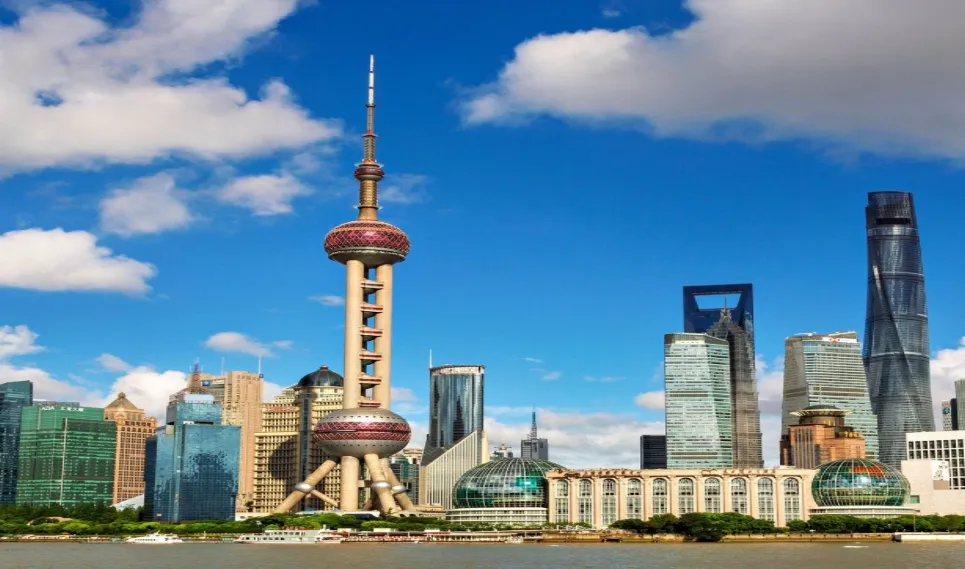Why the Oriental Pearl Tower is a Must-See Shanghai Landmark
Shanghai is a city of contrasts—where ancient traditions meet futuristic innovation. Among its many iconic structures, one stands above the rest, both literally and symbolically. The Oriental Pearl Tower has become a global symbol of modern China’s ambition and architectural daring.
This towering marvel, located in the Pudong district, draws millions of visitors each year. But why does it remain a top attraction decades after its completion? Is it just the height, the views, or something deeper?
In this article, we’ll explore the history, design, cultural impact, and visitor experience of this landmark. Whether you’re planning a trip to Shanghai or simply curious about world-famous towers, this guide will give you a comprehensive understanding of why the Oriental Pearl Tower deserves your attention.
A Symbol of Modern Shanghai
When the Oriental Pearl Tower was completed in 1994, it instantly became the tallest structure in China. At 468 meters (1,535 feet), it was an engineering triumph that signaled Shanghai’s emergence as a global financial hub.
The tower was built during a period of rapid urbanization and economic reform. Its design reflects the city’s ambition to blend Eastern aesthetics with Western technology. Unlike traditional skyscrapers, it features a unique, futuristic silhouette.
Its location in Pudong, once farmland, now home to some of the world’s most advanced architecture, underscores its symbolic role. The tower stands as a beacon of progress, visible from across the Huangpu River.
Today, it remains one of the most photographed landmarks in China. More than just a tower, it represents Shanghai’s transformation into a world-class metropolis.
The Unique Design of the Oriental Pearl Tower
The architecture of the Oriental Pearl Tower breaks from conventional skyscraper design. Instead of a single shaft, it features a series of spherical modules stacked along a central spine.
Designed by architect Jiang Huan Cheng, the structure includes 11 spheres of various sizes. These are not just decorative—they serve structural and functional roles, housing observation decks, restaurants, and broadcast equipment.
The spheres are inspired by a line from a Tang Dynasty poem: “Pearls of various sizes falling on a jade plate.” This poetic reference ties the modern structure to China’s rich literary heritage.
The tower’s foundation is equally impressive. It rests on 300 concrete piles driven 70 meters into the ground, ensuring stability in a region prone to soft soil and high winds.
This fusion of art, engineering, and cultural symbolism makes the Oriental Pearl Tower more than just a tall building—it’s a statement piece of architectural storytelling.
Engineering Behind the Tower
Building such a tall structure on the banks of the Huangpu River posed serious engineering challenges. The ground is soft, and typhoons are common. Engineers had to design a structure that could withstand both seismic activity and high wind loads.
The tower uses a combination of a central concrete core and nine cylindrical columns connected by steel beams. This creates a rigid, flexible frame that can absorb movement without compromising integrity.
A tuned mass damper—a 500-ton pendulum located near the top—helps reduce sway during strong winds. This technology is also used in other supertall buildings like Taipei 101.
Additionally, the exterior is covered in aluminum panels and glass, designed to resist corrosion from humidity and pollution. The lighting system, which changes color at night, is energy-efficient and programmable for special events.
These engineering solutions not only ensure safety but also contribute to the tower’s long-term sustainability as a landmark.
Observation Decks with Breathtaking Views
One of the main reasons visitors flock to the Oriental Pearl Tower is for the panoramic views. The tower features multiple observation levels, each offering a different perspective of Shanghai.
- Main Observation Deck: Located at 263 meters, this indoor deck provides a 360-degree view of the city skyline.
- Space Module: At 350 meters, this spherical chamber offers a more immersive experience with floor-to-ceiling glass.
- Lower Spheres: Some of the lower spheres house smaller viewing areas, ideal for families and casual tourists.
On a clear day, you can see landmarks like the Shanghai Tower, Jin Mao Building, and the historic Bund across the river. The contrast between old and new Shanghai is striking from this vantage point.
For the adventurous, there’s even a glass walkway on the higher deck. Standing over 300 meters above ground, it offers a thrilling, if nerve-wracking, experience.
Photographers and tourists alike find these decks invaluable for capturing the scale and energy of one of the world’s most dynamic cities.
Entertainment and Attractions Inside
The Oriental Pearl Tower isn’t just about views—it’s a full entertainment complex. Inside, visitors can explore a range of attractions that cater to all ages.
The Shanghai History Museum, located in the lower spheres, showcases the city’s evolution from a small fishing village to a global powerhouse. Exhibits include vintage photos, maps, and interactive displays.
There’s also a futuristic hall with holograms and VR experiences that simulate space travel and urban planning. This appeals especially to younger visitors and tech enthusiasts.
Dining options include the Revolving Restaurant at 267 meters, which completes a full rotation every 60 to 90 minutes. It offers both Chinese and international cuisine with a view.
Other amenities include a gift shop, a wax museum, and seasonal events like light shows and cultural festivals. These features make the tower more than a one-time visit—it’s a destination in itself.
How to Visit the Oriental Pearl Tower
Planning a visit? Here’s what you need to know. The tower is open daily from 8:00 AM to 9:30 PM, with last entry at 9:00 PM. It’s located at 1 Century Avenue, Pudong, easily accessible by metro.
The nearest station is Lujiazui on Line 2, a short walk from the tower’s base. Taxis and ride-sharing services also drop off directly at the entrance.
| Adult Ticket | ¥180 (approx. $25) |
|---|---|
| Child/Senior | ¥120 (approx. $17) |
| Revolving Restaurant | Additional ¥150–200 |
| Fast-Track Entry | Available online, reduces wait time |
For the best experience, arrive early in the morning or late afternoon to avoid crowds and catch both daylight and night views. Sunset is a particularly popular time.
Be sure to check the official website for updates on closures, special events, or temporary exhibits before your visit.
Cultural Impact and Global Recognition
Over the years, the Oriental Pearl Tower has appeared in countless films, documentaries, and travel guides. It’s often used as a visual shorthand for Shanghai in global media.
It has hosted international events, including New Year’s Eve light shows and diplomatic gatherings. Its image is featured on postcards, souvenirs, and even Chinese currency designs.
The tower also plays a role in national pride. As one of the first supertall structures built entirely by Chinese engineers, it marked a turning point in the country’s architectural independence.
Today, it’s recognized as a symbol of innovation and resilience. While newer towers like the Shanghai Tower are taller, the Oriental Pearl remains the most iconic.
Comparison with Other Shanghai Landmarks
Shanghai has no shortage of impressive buildings. How does the Oriental Pearl Tower compare to its neighbors?
The Shanghai Tower, at 632 meters, is the tallest in China and third-tallest in the world. It’s more energy-efficient and modern, but lacks the visual uniqueness of the Pearl Tower.
The Jin Mao Building and Shanghai World Financial Center also stand nearby, forming the “Three Giants” of Pudong. Together, they create a stunning skyline, but individually, the Oriental Pearl Tower has the strongest identity.
Across the river, the Bund offers historical charm with colonial-era buildings. While beautiful, it doesn’t offer the same futuristic experience as the tower.
In terms of visitor experience, the Oriental Pearl Tower strikes a balance between height, accessibility, and cultural content—making it a more well-rounded attraction.
Future of the Oriental Pearl Tower
As Shanghai continues to grow, the role of the Oriental Pearl Tower is evolving. While no longer the tallest, it remains a vital part of the city’s identity.
Plans for upgrades include enhanced digital experiences, improved accessibility, and greener operations. The management is exploring ways to integrate AI and augmented reality into the visitor journey.
There’s also a focus on sustainability—reducing energy use, improving waste management, and promoting public transit access.
Though newer attractions may draw attention, the tower’s historical and cultural significance ensures it won’t be forgotten. It’s not just a relic of the past—it’s a living landmark adapting to the future.
Final Thoughts: Why You Should Visit
The Oriental Pearl Tower is more than an observation deck. It’s a journey through Shanghai’s past, present, and future. From its poetic design to its engineering marvels, every aspect tells a story.
Whether you’re a tourist, an architecture enthusiast, or someone interested in urban development, this landmark offers something valuable. The views are unforgettable, the experience immersive, and the symbolism profound.
When visiting Shanghai, don’t just see the city—see it from above. Make the Oriental Pearl Tower a priority. Go early, take your time, and let the skyline tell you the story of one of the world’s most exciting cities.
It’s not just a tower. It’s a must-see landmark that captures the spirit of modern China.



